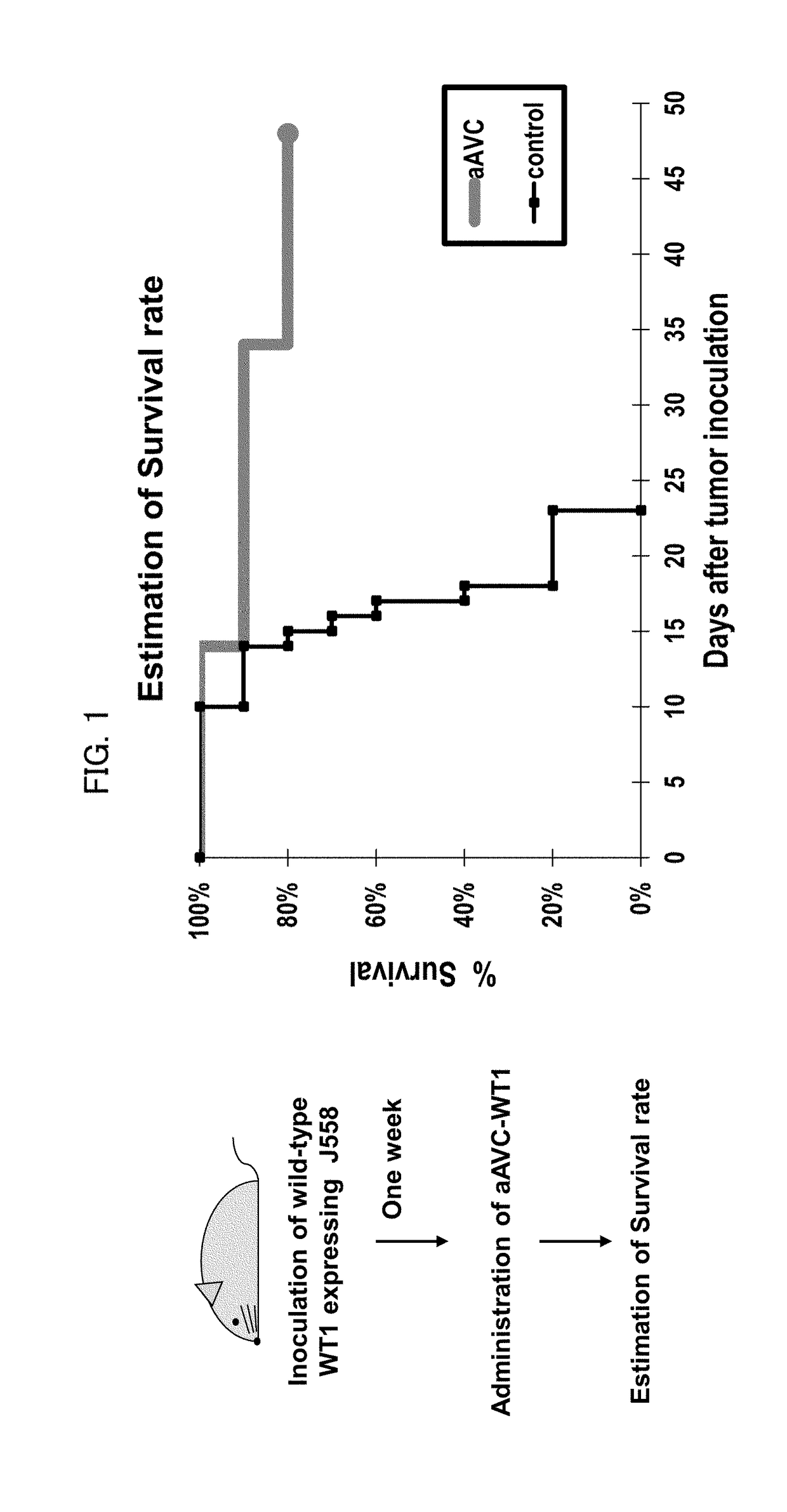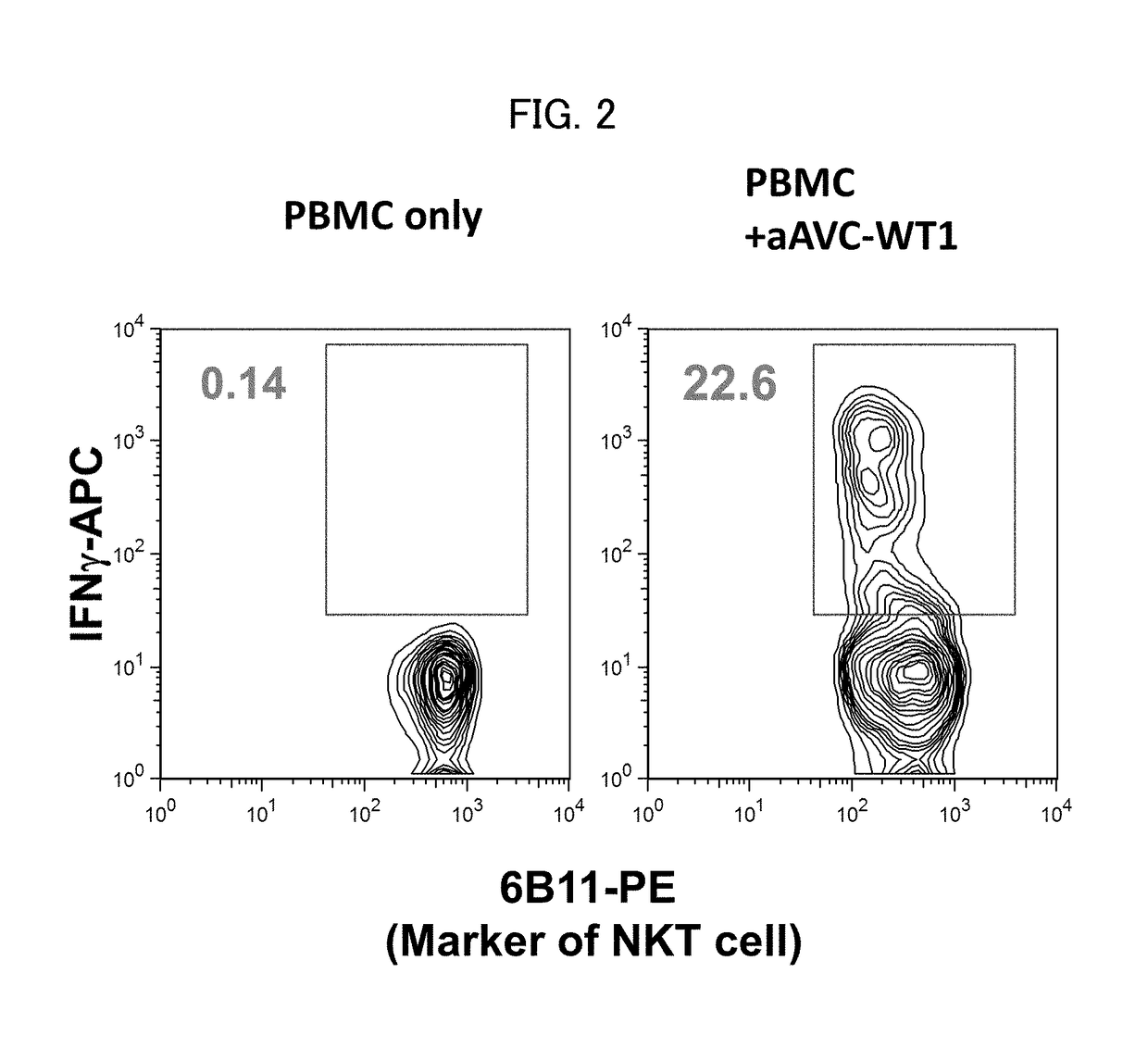Cell for immunotherapy, including modified nucleic acid construct encoding wilms tumor gene product
- Summary
- Abstract
- Description
- Claims
- Application Information
AI Technical Summary
Benefits of technology
Problems solved by technology
Method used
Image
Examples
example 1
n of RNA According to the Present Invention
example 1-a
Polynucleotide Encoding RNA of the Present Invention
[0083]A polynucleotide sequence of a target WT1 was obtained by PCR. Used as a template was plasmid DNA into which purchased cDNA (#SC308799, OriGene Technologies, SEQ ID NO: 3) encoding Variant D of human WT1 was inserted. Used as DNA polymerase for PCR was KOD-Plus-Ver.2 (#KOD-211, Toyobo Co., Ltd.). Oligonucleotide sequences of a primer pairs and a reaction condition of PCR were as follows.
(Primer Pair for ATG-WT1)
[0084]Forward: 5′-CCAAGCTTCCACCATGCAGGACCCGGCTTCCACG-3′ (SEQ ID NO: 5, Positions 3 to 8: a recognition sequence of the restriction enzyme HindIII; Positions 9 to 13: Kozak sequence; Positions 14 to 34: part of coding region sequence of WT1);
Reverse: 5′-CGGAATTCTCAAAGCGCCAGCTGGAGTTTGG-3′ (SEQ ID NO: 6, Positions 3 to 8: a recognition sequence of the restriction enzyme EcoRI; Positions 9 to 31: part of coding region sequence of WT1).
TABLE 1(Composition of Reaction Solution for PCR)Water25.6 μl 10× Buffer for KOD -Plus- V...
example 2
ic Effects Targeting the WT1 Antigen by Administration of aAVC-WT1
[0087]Wilms' tumor gene WT1 encodes a protein that has been reported to be a tumor antigen in a variety of malignancies. To evaluate whether WT1 could be used in our vaccine models, we established alpha-GalCer-loaded, mCD1d mRNA and WT1 mRNA co-transfected NIH3T3 cells that is denoted mouse aAVC-WT1. The WT1 mRNA used in aAVC-WT1 had AUG as start codon that is different from wild type WT1 mRNA (CUG). The preparation of the mouse aAVC-WT1 was as follows; NIH3T3 cells resuspended in OptiMEM and RNA were transferred to a cuvette and then the cell suspension was pulsed in ECM 830 Square Wave Electroporation System (Harvard Apparatus). Pulse condition was a single 500 V, 3 ms square pulse. Immediately after electroporation, the cells were transferred to culture medium and cultured in the presence of 500 ng / mL of alpha-GalCer. The mouse aAVC-WT1 included a WT1 mRNA according to this invention (SEQ ID NO. 4), not wild type W...
PUM
| Property | Measurement | Unit |
|---|---|---|
| Length | aaaaa | aaaaa |
Abstract
Description
Claims
Application Information
 Login to View More
Login to View More - R&D
- Intellectual Property
- Life Sciences
- Materials
- Tech Scout
- Unparalleled Data Quality
- Higher Quality Content
- 60% Fewer Hallucinations
Browse by: Latest US Patents, China's latest patents, Technical Efficacy Thesaurus, Application Domain, Technology Topic, Popular Technical Reports.
© 2025 PatSnap. All rights reserved.Legal|Privacy policy|Modern Slavery Act Transparency Statement|Sitemap|About US| Contact US: help@patsnap.com


